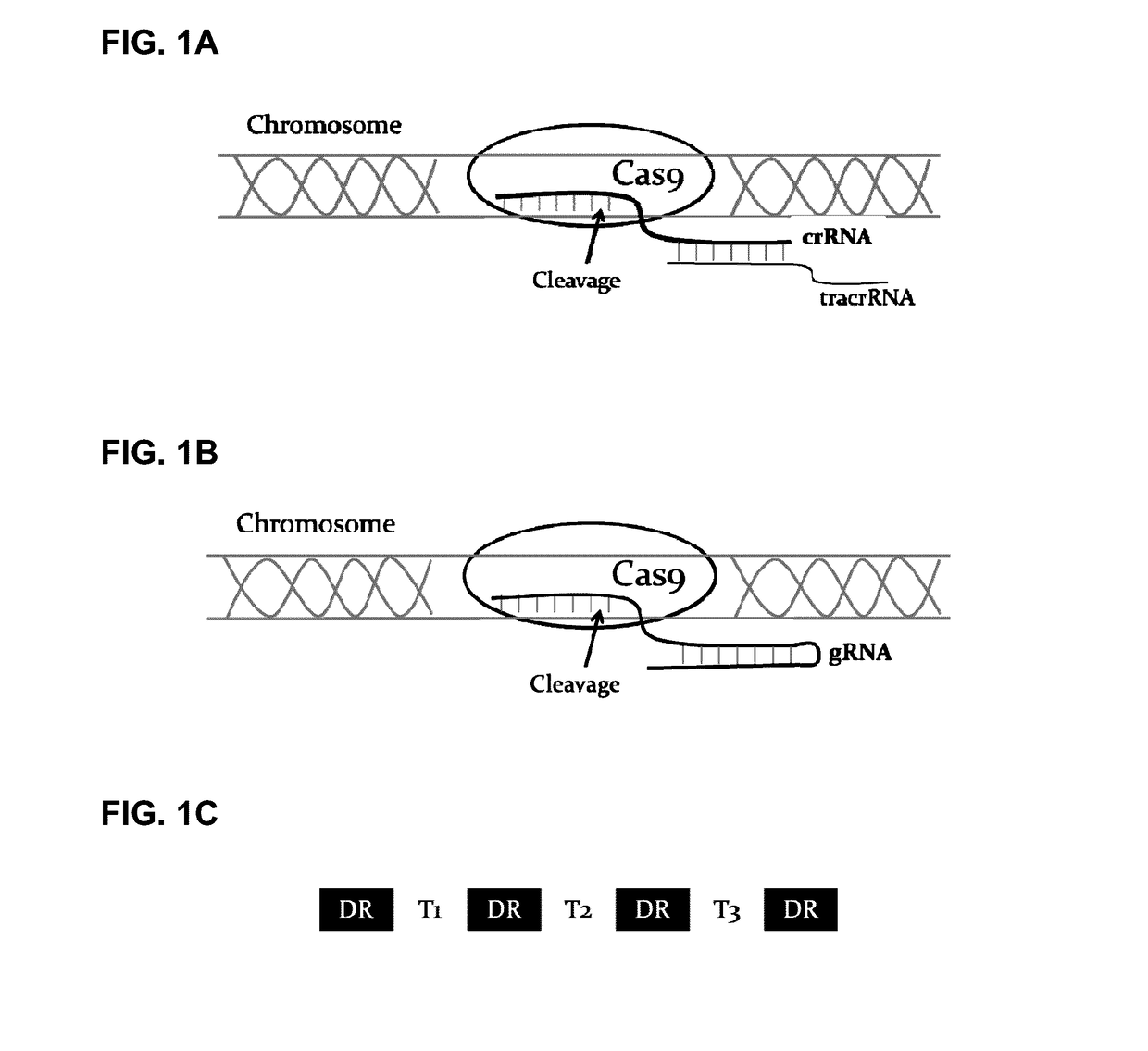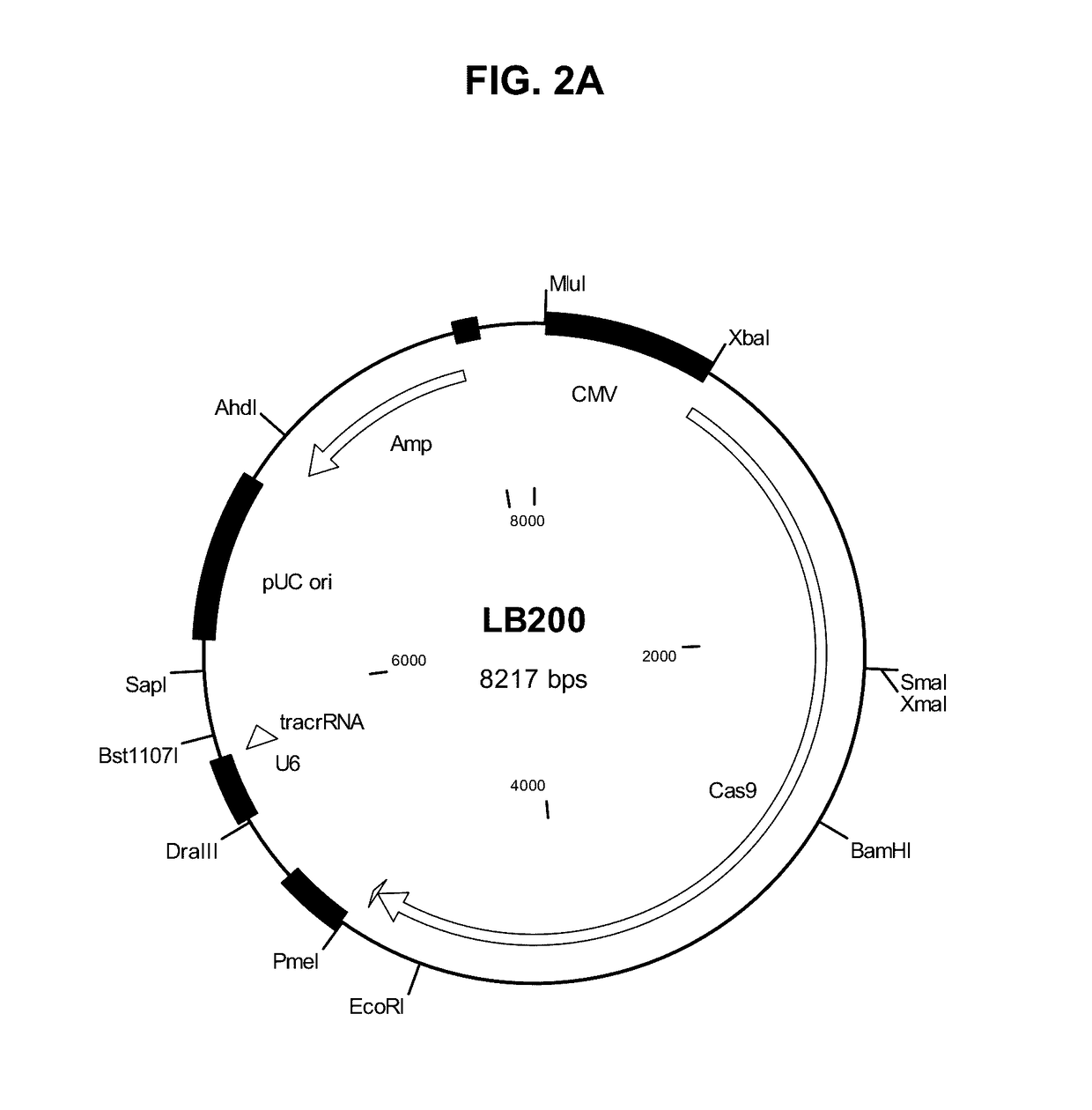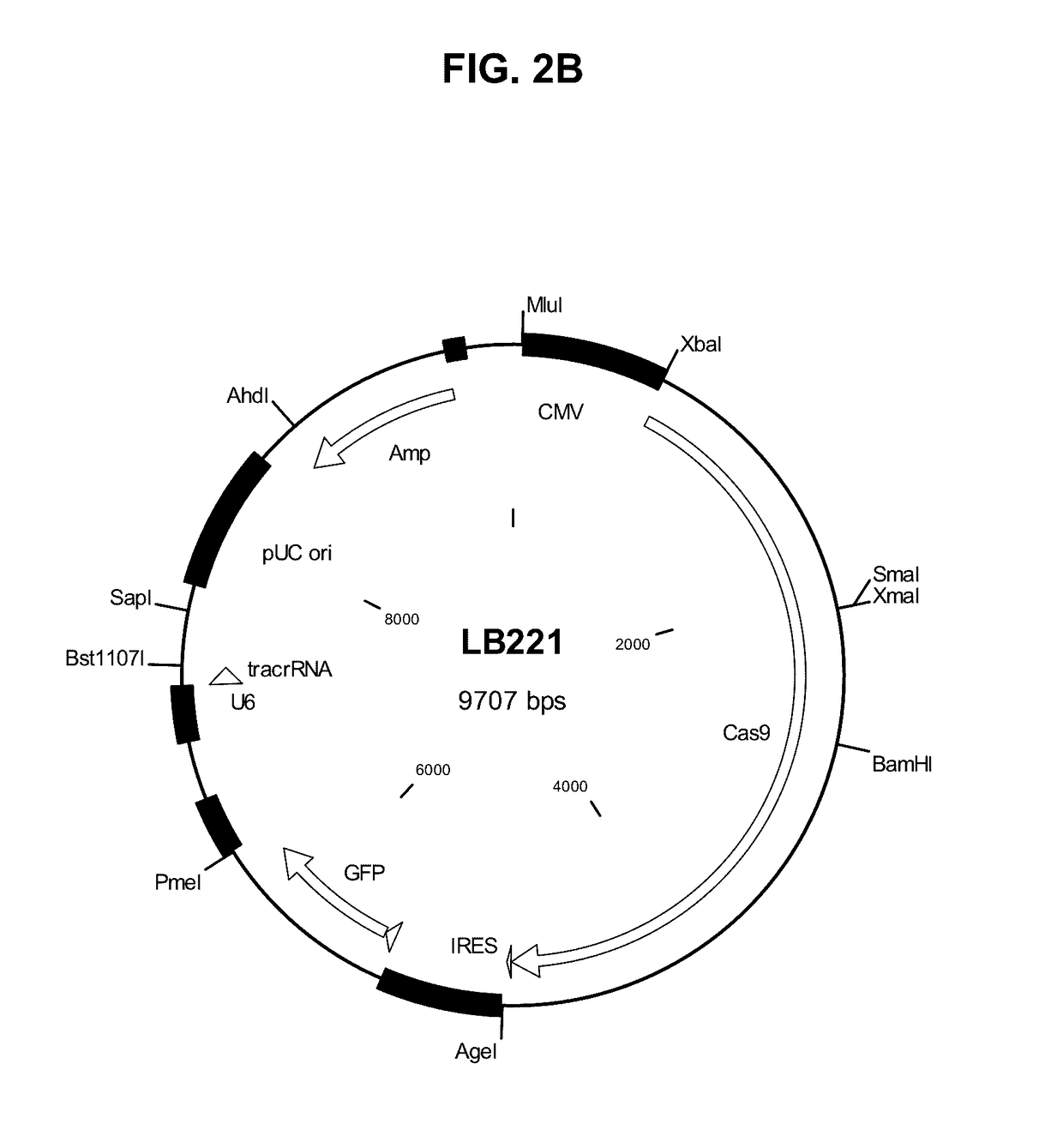Methods and compositions for producing double allele knock outs
a technology of allele knockout and composition, which is applied in the direction of enzymology, biochemistry apparatus and processes, transferases, etc., can solve the problems of allele knockout, laborious and unpredictable process of conventional gene disruption technology by homologous recombination, and only 1.6% efficiency of deletion
- Summary
- Abstract
- Description
- Claims
- Application Information
AI Technical Summary
Benefits of technology
Problems solved by technology
Method used
Image
Examples
example 1
n of Fut8 Gene in CHO Cells by Targeting Single crRNA Sites
[0076]S. pyogenes tracrRNA (SEQ ID NO:15) was cloned into a mammalian expression vector under the control of a human U6 promoter (SEQ ID NO:16).
[0077]
S. pyogenes tracrRNA(SEQ ID NO. 15)ATCTTGTTGGAACCATTCAAAACAGCATAGCAAGTTAAAATAAGGCTAGTCCGTTATCAACTTGAAAAAGTGGCACCGAGTCGGTGCTTT Human U6 promoter(SEQ ID NO: 16)AAGGTCGGGCAGGAAGAGGGCCTATTTCCCATGATTCCTTCATATTTGCATATACGATACAAGGCTGTTAGAGAGATAATTAGAATTAATTTGACTGTAAACACAAAGATATTAGTACAAAATACGTGACGTAGAAAGTAATAATTTCTTGGGTAGTTTGCAGTTTTAAAATTATGTTTTAAAATGGACTATCATATGCTTACCGTAACTTGAAAGTATTTCGATTTCTTGGCTTTATATATCTTGTGGAAAGGACGAAACACC
[0078]The tracrRNA expression cassette was synthesized and cloned into vector pcDNA3 (Invitrogen) between restriction sites Dra III and Bst1107 I to give vector LB-tracrRNA. S. pyogenes Cas9 cDNA encoding Cas9 protein (SEQ ID NO:18) was mammalian codon-optimized (SEQ ID NO:17) and fused with a nuclear localization signal (NLS, SEQ ID NO:19 and SEQ ID NO:20).
[0079...
example 2
n of Fut8 Gene in CHO Cells by Targeting Multiple crRNA Sites
[0086]Mammalian expression vectors LB203-207 (Table 3) were constructed to express crRNA targeting multiple target sequences T1-T10 in the hamster Fut8 gene. All vectors utilized human U6 promoter to express a crRNA array similar to that in FIG. 1C.
[0087]1×106 CHOS cells were co-transfected with 2-4 plasmids shown in Table 4 (condition #4-10, #14-20). One week after transfection, the cells were stained with LCA-FITC, and then subjected to flow cytometric analysis to determine binding of LCA to cell surface fucose.
[0088]Wild type CHO-S cells exhibited strong staining of LCA on the cell surface (FIG. 5a). Most of the cells resided in the M3 peak with a strong fluorescence signal intensity. Transfection #1 (one CRISPR targeting sequence) showed similar results as the control cells without transfection. The M2 peak representing background staining of LCA-FICT was 0.14%, similar to that of the negative control cells. Transfecti...
example 3
of Fut8 Knock-Out CHO Cells
[0092]Cells in the M2 peak of transfection #5 were sorted into 96-well plates as single cells. After colonies grew out in 2 weeks, 11 clones exhibiting a similar growth profile as the wild-type CHOS cells were picked and expanded into shake flasks and cryopreserved. These clones were confirmed to be negative on LCA-FITC staining and to contain biallelic frame-shift mutations in the Fut8 gene by PCR and sequencing. The LCA staining data of 3 clones are shown in FIG. 6A. Sequence alignment of the exon 1 for 3 modified Fut8 alleles are shown in FIG. 6B (SEQ ID NOS:1-4), indicating frame-shift mutations of 2 bp insertion, 1 bp deletion, and 91 bp deletion. Indels in the first 2 mutants occurred at the cleavage site of the protospace T2. The deletion in the 3rd mutant occurred between the protospacers T1 and T2.
[0093]The 11 Fut8− / − CHO clones were tested for transfection efficiency using a GFP expression vector. 1×106 cells were transfected with 10 μg of DNA us...
PUM
| Property | Measurement | Unit |
|---|---|---|
| volume | aaaaa | aaaaa |
| pH | aaaaa | aaaaa |
| size | aaaaa | aaaaa |
Abstract
Description
Claims
Application Information
 Login to View More
Login to View More - R&D
- Intellectual Property
- Life Sciences
- Materials
- Tech Scout
- Unparalleled Data Quality
- Higher Quality Content
- 60% Fewer Hallucinations
Browse by: Latest US Patents, China's latest patents, Technical Efficacy Thesaurus, Application Domain, Technology Topic, Popular Technical Reports.
© 2025 PatSnap. All rights reserved.Legal|Privacy policy|Modern Slavery Act Transparency Statement|Sitemap|About US| Contact US: help@patsnap.com



